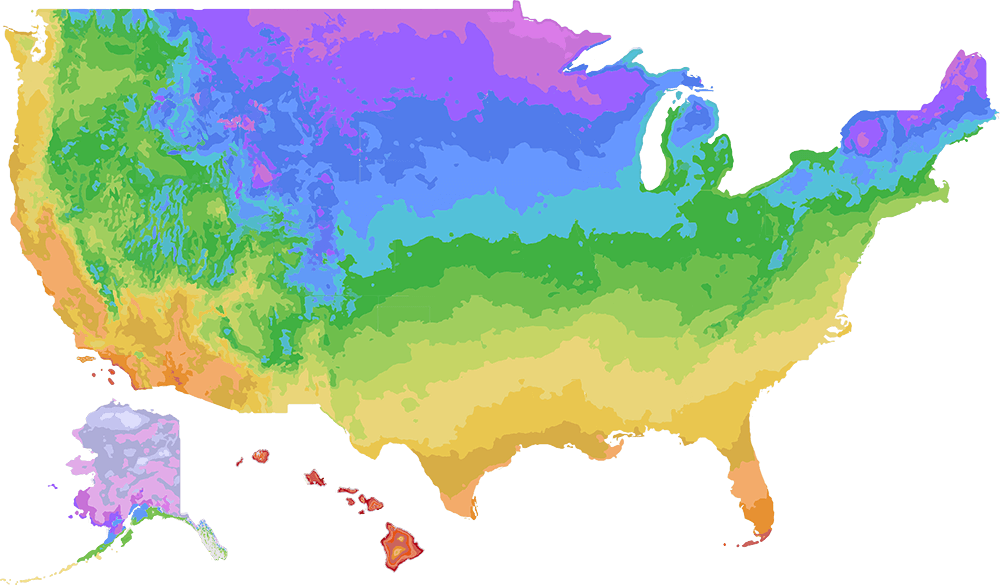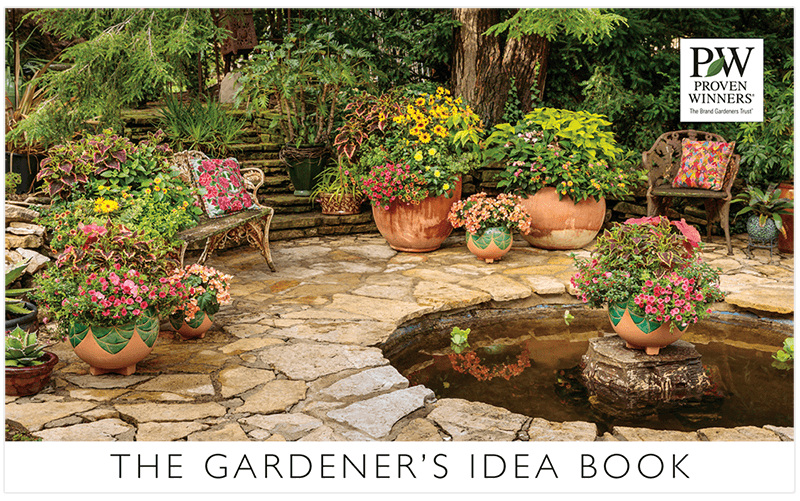Drought-Resistant Landscaping - A Proven Winners Guide
Reduce water usage in your yard and create an environmentally friendly landscape with these drought-tolerant garden ideas
 Buy drought-tolerant plants - Order online and have them shipped right to your door
Buy drought-tolerant plants - Order online and have them shipped right to your door
With a changing climate, rising water bills and higher demand, traditional landscapes are becoming more expensive than ever to maintain. Water-thirsty lawns have become less practical, even in areas with regular rainfall. In arid desert regions, water has become a precious resource, with more cities and towns imposing water restrictions.
By changing your landscaping, you can create a yard that requires less water and is easier to maintain. Drought-resistant landscaping, also known as xeriscaping, is becoming increasingly popular, replacing traditional landscaping that requires more resources to maintain. By utilizing waterwise hardscape, drought-tolerant plants and water-saving techniques, you can substantially reduce your water usage.
LOW-WATER LANDSCAPING IDEAS
Here are some of the best landscaping techniques for creating a drought-resistant yard:
- Create a plan
Evaluate your yard and come up with ways you can reduce or better manage water usage. Note the amount of sunlight, type of soil and whether there are spots where water collects or are especially dry. Site plants according to these growing conditions. Draw up an informal sketch or a more extensive landscape design plan. You can tackle your yard all at once or break it down into phases, depending on your time and budget. - Reduce or eliminate your lawn
The most high-maintenance and water-thirsty part of your yard is the lawn. Turf grasses need regular water, mowing and fertilizing, which requires a lot of resources. You don’t have to replace your lawn all at once. Start in one part of the yard, gradually replacing lawn with drought-tolerant garden beds, waterwise ground covers and hardscape. A front yard can be planted with turf grass substitutes such as drought-tolerant sedges, groundcovers and succulents that require less water. For backyard areas, replace lawn with a rock garden, waterwise mixed border, gravel gardens or hardscape. - Improve the soil
Most native soils need the addition of organic matter to provide nutrients and improve drainage. Plants will develop a more vigorous root system, be healthier and more resilient to heat and drought when they are given healthy soil to grow in. Before planting, turn and break up the soil, add compost or other organic matter and make sure there is good drainage. - Use eco-friendly hardscaping
Hardscape is an effective low-maintenance substitute for turf lawns and water-thirsty garden beds. Instead of using solid concrete for driveways, pathways and patios, use permeable paving materials such as gravel, stepping stones or pavers that will allow water to percolate into the soil instead of running off. - Plant a curbside garden
The area between your sidewalk and street is hot and inhospitable to turf grass and many other plants. Create a drought-resistant strip using tough plants that are forgiving of harsh growing conditions. - Collect rainwater
Gutter systems are designed to capture rainwater and divert it into downspouts. This water can be captured by disconnecting downspouts and diverting the water into rain barrels for watering the landscape later. Some cities offer credit on water bills for rainwater harvesting. Check with your local government to make sure that downspout disconnection is allowed in your area. - Create a rain garden
Another way to conserve water is to create a rain garden, which allows water to percolate into the soil rather than running off into storm drains. Create a shallow trough to collect rainwater and plant the perimeter with plants that thrive with more water. Find some of the best rain garden plants here: 21 Top Rain Garden Plants - Use water-efficient irrigation
The way you water your yard can make a big difference in your water usage. Drip irrigation and soaker hoses that deliver water directly to plant roots are more efficient than overhead watering, which results in evaporation. For containers, use drip irrigation or a watering wand to deliver water directly to the root zone. Water early or late in the day when temperatures are cooler to reduce evaporation. Avoid overwatering, which can lead to wastage, root rot and other diseases. - Mulching
Placing an organic mulch around the base of plants reduces evaporation, suppresses weeds and helps the soil retain moisture. Compost, bark chips or shredded bark are the best choices around ornamental plants. Use straw, grass clippings or leaf mulch in vegetable beds. In arid climates, inorganic gravel or stone mulch may be a better alternative. - Terrace a slope
Hillside properties are notorious for storm runoff, which can cause soil erosion and water loss. Terracing helps to stabilize the soil and slow runoff to allow water to percolate into the soil. Beautify a slope with attractive rock features such as boulders or create a series of stone walls. Find tips for creating a beautiful terraced slope garden here: Taming a Slope: Tips for Gardening on a Sunny, Terraced Slope - Drought-resistant tips for containers
Plants grown in containers dry out more quickly than those in the ground, requiring more frequent watering. To reduce water usage, use larger containers that hold more soil. Choose materials such as ceramics and resin that retain moisture better than clay or coco fiber. Self-watering containers are another way to reduce water usage and maintenance. Try these Proven Winners Aqua Pots that combine the convenience of a self-watering system with the beauty of high-quality glazed ceramics: Aqua Pots® Benefits for Home Gardeners

DROUGHT-TOLERANT PLANTS TO GROW
One of the best ways to reduce water usage is to design a landscape with plants that don’t need a lot of supplemental water. Native plants are already adapted to local growing conditions and require minimal supplemental water or other maintenance. Plants such as succulents and cacti use less water than thirsty plants such as petunias and lobelia. Do your research and choose plants that are right for your region and growing conditions. Here are some drought-resistant planting suggestions:
Plant for hot, dry climates
Gardening in a climate with naturally dry conditions has its own challenges. The key to a successful landscape is to grow plants that are already adapted to these conditions. Here are some of the best landscape plants that will thrive in hot, dry climates: 10 Perennials and Shrubs for Hot, Dry Climates
Plant perennials
For a budget-friendly solution, reliable perennials offer many years of color in beds, borders and containers. For increased longevity, choose low-water perennials that are tough and tolerant of a range of growing conditions. Learn more about choosing and using drought-tolerant perennials for your yard: Learn About Drought-Tolerant Perennials
Choose the right annuals
Finding annuals that will look good all summer long in dry conditions can be a challenge. Here are some heat-loving annual varieties that will thrive with less water: 10 Annual Plants for Hot, Dry Climates
Select plants for ornamental attributes
Add season-long color to your landscape by choosing varieties with attractive foliage, structure and flowers that bloom over a long period. Plant a mix of shrubs, perennials and annuals in different shapes, sizes and colors for captivating visual interest. Here are some of the best drought-tolerant plants for dry areas in your yard: 17 Drought-Tolerant Plants Perfect for Dry Spots in Your Garden
Right plant, right place
Whether it’s a container, garden bed or entryway, find the best plants for different parts of your yard: Low-Water-Use Plants
Find more ideas and inspiration for low-water plants here: Low-Water Plants that Thrive
PLANTING TIPS FOR DROUGHT-TOLERANT LANDSCAPING
When planting a drought-resistant landscape, follow these tips:
Provide the right growing conditions
Though choosing the right plants is essential, providing the right growing conditions is just as important. Following these tips for planting and maintaining your drought-tolerant landscape: Growing Tips for Arid Spaces
Create dense plantings
Leaving large gaps in garden beds allows water to evaporate. Placing plants closer together helps to shade the soil, reducing evaporation. There are also less weeds, which compete for water.
Plant groundcovers
Low-growing groundcovers act as a living mulch, shading the soil and reducing evaporation. Choose drought-tolerant groundcovers such as creeping thyme, succulents, bugleweed and sedges that require little maintenance or supplemental water.
Group plants together with similar growing needs
Choose plants that require less water and plant them in the same area. This will help increase watering efficiency and reduce the frequency of watering.
Buy Proven Winners plants:





